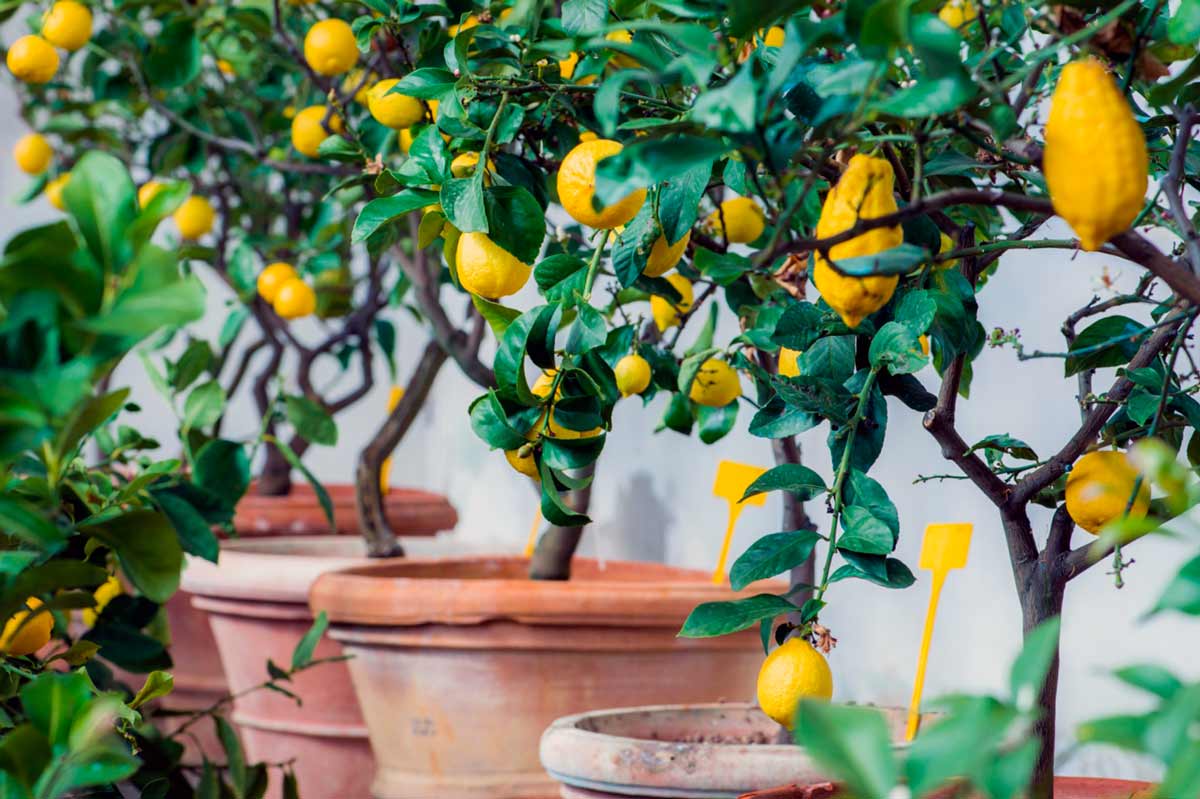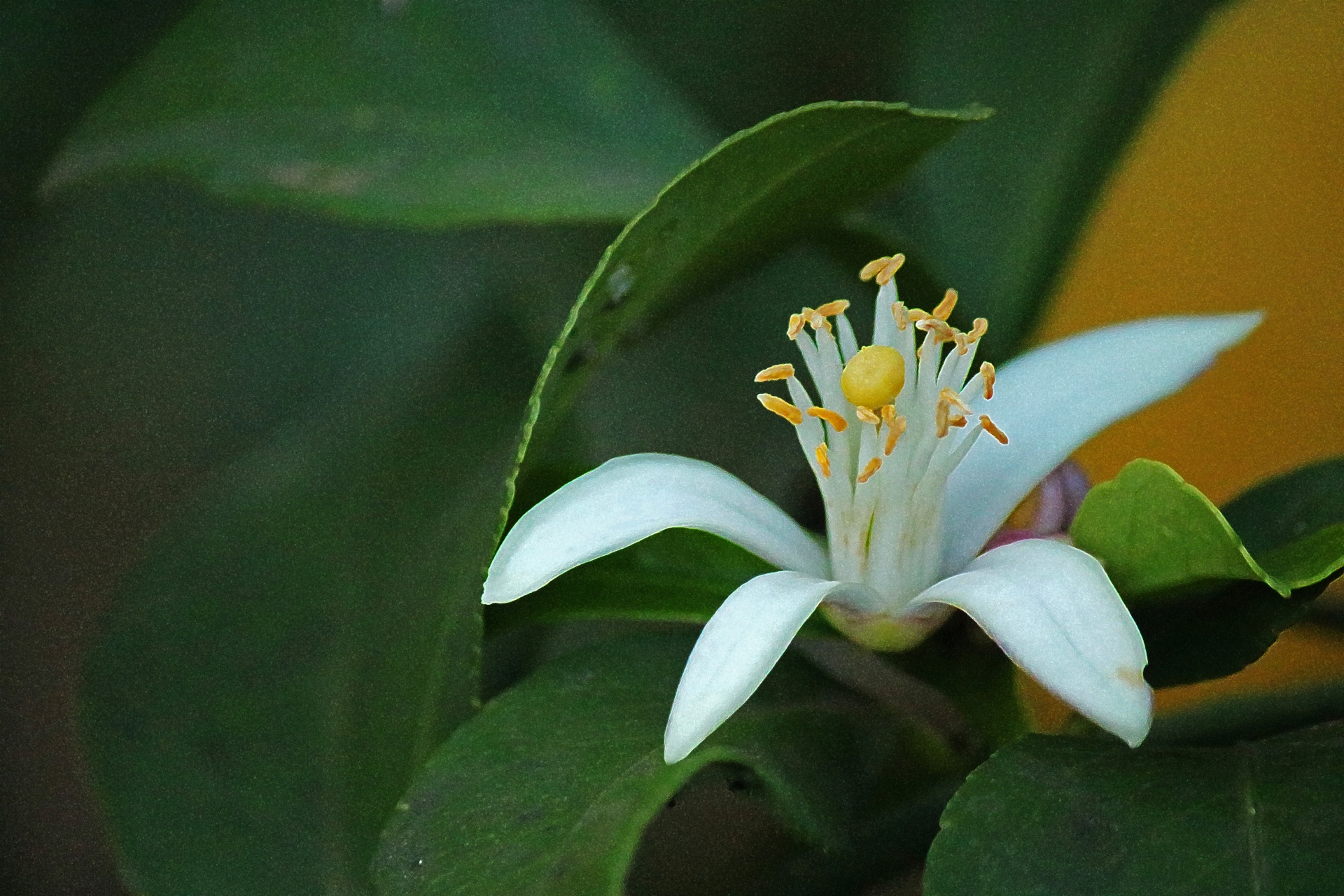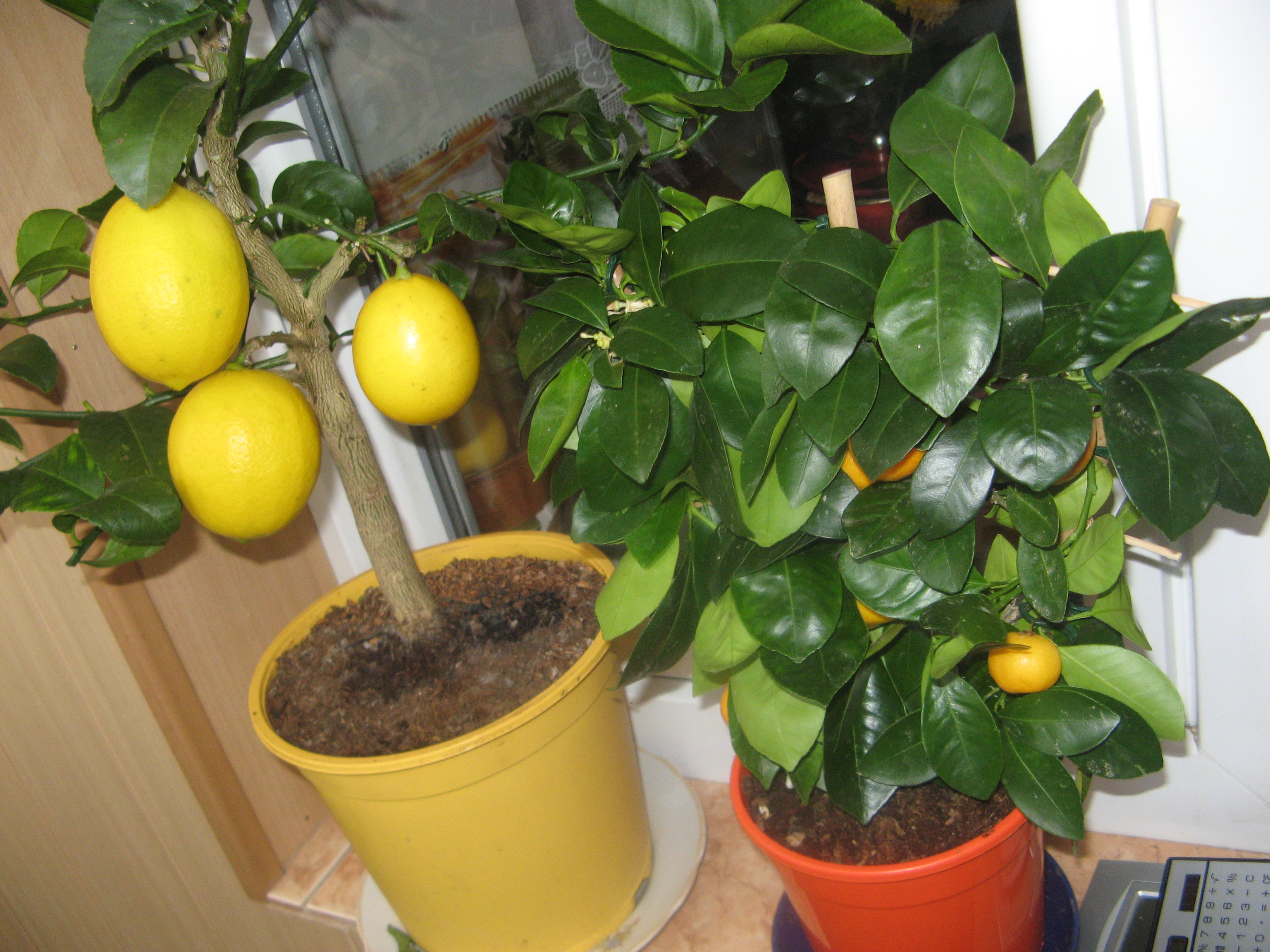The lemon tree is very useful in the household. Proper tree care in winter will provide many flowers and fruits in the warm period.

Evergreen trees
Most trees are deciduous or evergreen. The word “leafy” means “to fall off”, so the leaves of such trees fall every autumn, and grow back by the following spring.
On evergreen trees, the leaves always remain green and lose leaves under certain conditions. Citrus trees are evergreen, not deciduous trees. Some fruit trees, such as apricots, are deciduous and usually lose their leaves in autumn. Do lemon trees lose their leaves in winter?
The lemon tree is also very useful. Compared to grapefruit or lime, the lemon tree is a good source of vitamin C and citric acid. In the past, people considered this citrus tree a traditional remedy for scurvy. The application consists of medicine, cooking, cosmetics, aromatherapy, and much more. World production reaches millions of tons per year.
What about fruits? Although citrus trees don’t go through a dormant period in winter, many varieties experience stunted growth.
Furthermore, the number of lemon fruits depends on the planting site. Trees which are grown in the ground generally produce higher yields than trees grown in containers.
If you want a fruitful citrus tree, notice the Mayer lemon tree. This species has an average of six to ten harvest periods per year. For example, a five-year-old bush in the ground can produce more than 800 fruits, and a whole garden can produce about 1,500 per tree per year. But if this lemon tree loses leaves, what is the reason?
Do lemon trees lose their leaves?

Lemon trees do not shed their leaves in winter. The lemon tree is an evergreen tree. During the year it is covered with green, hard leaves. But in some cases, lemon trees can lose leaves. For example, if they are going through a period of stress, including extreme weather, water shortages, or pest attacks.
Do lemon trees go dormant in winter?
A cold snap in late autumn brings the tree into protective mode. In this mode, growth slows down significantly. Lemon trees do not shed their leaves at this time, but you can see that little is happening to the plant.
That is, leaves or flowers will not grow either. But why is my lemon tree losing leaves? Let’s take a look at some of the causes of citrus leaf drop.
Is it normal for leaves to fall off a lemon tree?

As mentioned, during the winter period, new leaves almost do not grow. Typically, the process of leaf maturation occurs as follows: first, the leaves are dark red, then light green, and finally dark green. Dark green is the color of an adult leaf. As you can see, dormant lemon trees have a lot of dark green leaves and a few light green ones.
The slow growth of citrus trees
This is a good sign for a tree. Mature leaves are tougher, they are the protection from light frosts in winter. If leaves turn yellow or brown spots, this indicates frost damage. It is not recommended to cut them immediately. It is better to do this in the early spring, when the probability of frost has passed.
Flowers on a lemon tree

On cool and short days, the tree will start to conserve energy. Therefore, you can notice the lack of colors. On sunny days, when the heat returns, the plant begins to bloom again. However, this factor depends on the type of tree and the region. In some mild climates, including tropical and subtropical regions, flowers can be seen in winter.
The stem doesn’t grow anymore
The stem of lemon trees may stop germinating during the cold period. That is, for the next 3 or 4 months, the tree will remain the same size. With the onset of warming, the stem may increase in length by 1/3. This can happen in one or two months, with it expanding rapidly and new leaves and flowers growing rapidly.
Keeping citrus trees alive in the winter

So, it is significant to protect the roots of the plants during a cold snap. It is recommended to add a 2-3 inch layer of bark or straw mulch around the root zone to help insulate the soil.
Insulated soil can regulate temperature, protect against worms or soil bacteria more easily, and prevent damage to roots near the soil surface. Young lemon trees grown in the ground can be protected from frost by using a wire cage wrapped in cloth or plastic.
This will prevent frost from getting on the leaves and damaging them. This care will help prevent the citrus leaf drop.
Why has my lemon tree lost its leaves?

Evergreen plants can bloom all year round and bear fruit. If you’ve noticed that your lemon trees lose leaves quickly, there are some common causes of leaf drop:
- Nutrient deficiency;
- A large amount of fertilizer;
- Fungal disease;
- Pruning.
With careful and attentive care of a plant, you can also realize that something has happened to it: changes in the color and shape of the leaves. The appearance of yellow spots or growth leads to the death of the fruit. Affected areas in the early stages can be saved. They are treated with a special liquid: at the beginning of the warm months and in the middle of summer.
Bulges on the stem, leaves, or fruits are already talking about another disease. Soon holes will appear on the bulges, and the bark will begin to crack. In addition to a special liquid, all affected areas are cut off and the soil is changed. During the flowering period, additionally, treat with copper sulfate.
Nutrient deficiency

Magnesium and iron deficiency in lemon trees can cause leaf drops. Symptoms of magnesium deficiency include yellowing or bronzed leaves. In very severe cases, the leaves of citrus trees fall profusely. Symptoms of iron deficiency also impact thin, small leaves that suffer from chlorosis and lose leaves early.
Salt and iron can help citrus plants in this case. Iron deficiency most often occurs in citrus trees with inadequate irrigation or growing in areas with poorly draining soil. To check for nutrient deficiencies, you need to do a soil test. You’ll find soil testing kits readily available at garden centers and home improvement stores, as well as many online retailers.
A large amount of fertilizer
Citrus plants are heavy feeders. Excessive fertilizer can lead to leaf drop. Too much fertilizer can cause leaf drop. Young lemon trees require light fertilizer during the first year (1 tablespoon per month in the warm season).
After the first year, fertilize the citrus trees every four to six weeks and gradually increase the amount of fertilizer each year as the lemon tree grows.
When using fertilizer, make sure you spray it equally, covering the entire root zone. Do not pile fertilizer directly at the base of the tree, as this may cause damage.
Proper fertilization practices can help prevent leaf drops from Meyer lemon trees due to over-fertilization. If everything is fine with fertilizers, then pests can serve to further leaf loss.
Pests are causing leaf drop
Certain insect pests can cause leaf loss on lemon and other citrus trees. The pests are most active in late summer and early fall. To control them, introduce natural predators to your crop, such as parasitic wasps. But before using it, consult more experienced gardeners. Lemon trees prefer moderation in everything.
Damage to root rot
The rot often affects lemon trees and causes many symptoms such as yellowing of the leaves and leaf drop. This irritating fungus infects the root ball and the whole root system of the lemon tree.
This is regularly due to the moisture content of the trunk. To avoid rot, plant trees in areas with well-draining soils and where they will not receive frequent watering.
Overwatering of citrus trees

The lemon trees lose leaves due to watering problems. When the roots of the tree sit in water, they tend to develop rot on the root, which in turn results in the lemon tree dropping leaves.
You can also determine if your plant is not getting enough water by checking for leaf curl, dry ground, and early leaf fall.
Improper watering is one of the other most common reasons why citrus trees die. Lemon trees require more water during the warmer months and less during the colder months.
If the root has already rotted, then try reducing watering. This will help if the rot has not grown seriously. Otherwise, unfortunately, you will have to remove the tree and fumigate the area.
Shaving
If the bush has reached more than four feet, pruners should be used. They need to be sterilized first. Then cut off dead and long branches. If you cut branches after the autumn period, the tree can quickly die. This should be done at the end of winter, before the flowering period. This care will help the plants maintain their shape and airflow.
Lemon trees in pots

If you live in a frosty region, move your potted lemon trees to a sheltered location. Make sure the pot has a good drainage hole to allow excess water to seep out of the soil. This will prevent the leaf drop and prepare leaves for rapid growth. During the cold season, place the pot next to a sunny window. Return the citrus tree to the full sun when spring arrives for the following flowering.
Why is my potted citrus tree losing leaves?
Let’s say you decide to move your lemon tree indoors to protect it from winter approaches. You may find that the lemon tree has started losing leaves rapidly.
The same situation can happen with purchased citrus trees. Leaf loss is provoked by the shock of the contrast of conditions between the street and the environment.
This is because the citrus trees are grown in greenhouses before being sold. There they acclimatize to specific conditions. When transplanting, plants go through stress as they move to a different environment.
Sudden changes can cause leaf loss. It is also important to consider the level of humidity, sunlight, temperature, and airflow.
Humidity and sunlight for lemon trees
At home, lemon trees prefer lower levels of humidity than outdoors or in greenhouses. Sunlight is essential for them. Citrus trees grow in warm climates with intense sunlight, so indoors they can be too shaded.
So if your citrus tree is losing leaves and showing no signs of disease or pests, then it’s probably warm or humid.
Lemon trees are sensitive to light. While most species can tolerate low light, some species prefer bright sunlight to stay healthy. By the way, these include the Meyer lemon tree. Indoor lighting problems are not uncommon. Moreover, don’t put the plant in direct sun. Excessive heat is also detrimental to the plant.
When a plant changes location, the amount of water and light it receives also changes. With a lack of light, the fruits of a lemon will not develop. The proper amount of sunlight ensures successful fruiting.
Symptoms in such cases are the loss of leaves and their further yellowing. To eliminate issues with insufficient lighting in plants, you can constantly move the plant to shady places, and then slowly return to more intense lighting.
It all depends on the season. In the summer months, you can take the plant outside, there will be enough lighting.
Temperature and Airflow for lemon trees

50 °F (10 °C) is not good for lemon trees. The difference in temperature change from cold weather to hot can cause leaf loss. The same applies to citrus trees standing next to a heat source.
A sudden drop in daylight is one of the main drivers of the lemon tree losing leaves. It may be too dry for a lemon tree. Do not place the tree under direct current. This drains the moisture from the leaves, causing them to fall to conserve water.
So, it’s very common for a lemon tree to lose its leaves when it’s brought indoors. Citrus plants are fastidious. But this doesn’t always mean the death of the tree.
This is the lemon tree’s natural reaction to the stress of moving. Let’s see what can be done if the tree has lost many leaves.
Will the leaves grow back on my lemon tree?
In winter, the humidity in the houses is low, so it is important to spray the leaves and fruits of the lemon tree with a spray. You can start spraying as soon as the tree is in the room.
You can leave the dispenser next to the pot, so you don’t forget. If the leaves still dry out, you can increase the frequency of watering. Lemon trees require more water in warm environments.
If your citrus tree is dropping leaves, this may indicate a lack of daylight. The key is to make a high level of lighting. It is recommended to place your lemon tree on the sunniest side, or in a place by a sunny window. High guarantees can only be given by a heated greenhouse. This is the perfect fit for lemon plants.
As already mentioned, keep a constant temperature. Stress leads to the lemon tree dropping leaves. Any nearby heat source can increase evaporation from the soil.
This way your pot can be dried out. Citrus tree leaves will fall to retain moisture during a drought. Moreover, don’t forget about the direct current of air.
Citrus trees outside in winter
The growing season for trees is spring and summer months. They are favorable by all standards, but you can help the tree survive in cold temperatures.
So, citrus trees do not have a high level of frost resistance. Before planting, you can buy a rootstock or cold-resistant varieties. Carefully choose the best place for a lemon tree.
Cold damage and improper watering cause leaf drops. A lemon tree can be covered, for example, with an old blanket. It will help keep you warm throughout the day. Moreover, don’t forget about the light. Lamps or LED strips provide extra warmth for small to medium-sized trees. Humidification shouldn’t be plentiful.
Propagation of the lemon tree
You can propagate or clone a lemon tree using seed germination, budding, or stem cuttings. Each method has its tools, care requirements, and schedule for spreading roots. A favorable place for breeding is the southern or southeastern regions. In such places, the plant will be protected from the cold wind.
Conclusion
If you’re short on space, plant a lemon tree in a pot, and you can move it under cover when it becomes low temperatures. But even in this case, you can save the tree. Proper maintenance of the citrus trees will help them survive the cold season and bear fruit in the warm season. Most citrus may shed their leaves before cold weather: they’re very sensitive to cold.
In winter, most lemon trees slow down growth. At the same time, the tree retains energy and nutrients. This helps them prepare for the following growth. Citrus trees such as lemon trees are great fruit trees to start with if you’re a beginner gardener, and a great decoration for any garden. Read about dusty miller winter care guide from the new article
- Why Are There Still No Tomatoes in My Tomato Plants? Let’s Fix the Issue! - July 13, 2023
- Water Propagation White Stuff on Roots: Everything You Should Know! - July 11, 2023
- String of Dolphins Drying Up: Solved! - July 11, 2023

